Manual complex for countering UAVs "Harpoon-3"
Currently, our country is actively developing a variety of electronic warfare systems designed to counter unmanned aerial vehicles. Some of these projects provide for the creation of hand-held complexes, ergonomically close to rifles or shotguns. One of the latest developments of this kind is the "Harpoon-3" complex, which has recently come to the test at the test site.
Promising family
Complexes for countering UAVs of the "Harpoon" line are developed by the "Technologies of Automation and Programming" company (St. Petersburg). Several years ago, the first sample of the family, "Harpoon-1", was presented. Since 2019, the improved Harpoon-2M complex with improved characteristics and new functions has been demonstrated at exhibitions. Finally, this year at the MAKS-2021 salon, for the first time, the next complex - "Harpoon-3" was presented.
During the aerospace show, the development organization revealed the main characteristics and capabilities of the new product, and also pointed out its differences from the previous "Harpoons". The main results of the new project were an increase in the main characteristics and an improvement in performance. The main functions and capabilities in general have not changed.
Also at MAKS-2021 they said that "Harpoon-3" has already gone into serial production and is being supplied to customers. Moreover, by the time this information was disclosed, the new complex had bypassed the previous developments of the family in terms of production volumes. However, the specific numbers were not disclosed then.
The armed forces and power structures, as well as various commercial and other organizations, are considered as potential customers of "Harpoon-3", as well as the previous complexes of the family. Such a complex should be of interest for any structure that faces the problem of small-sized UAVs.
Complex at the site
On November 8, the press service of the Central Military District announced the first tests of "Harpoon-3" by the armed forces. During the exercises "Indestructible Brotherhood-2021", the peacekeeping unit of the Central Military District demonstrated to foreign colleagues the work of the checkpoint, organized taking into account the experience of recent decades, incl. results of events in Nagorno-Karabakh.
A mobile EW group equipped with modern equipment worked at the training checkpoint. Together with other samples, she received the Harpoon-3 UAV countermeasure system, which was first presented at army exercises. Using these and other products, the mobile group successfully suppressed attempts by a mock enemy to use reconnaissance Drones.
Prospects for a new complex of counteraction have not yet been specified. Perhaps, in the near future, the electronic warfare groups will continue to use such equipment, gain the necessary experience, and after that subsequent decisions will be made. "Harpoon-3" has every chance to enter service with the Russian army and other structures.
Technical features
All complexes of the "Harpoon" line have a similar appearance and form factor, but differ in different details, composition of devices and elements, and also show different characteristics and have different functions. The last "Harpoon-3" thus turns out to be the most perfect and effective.
All "Harpoons" are built in the form-factor of "anti-drone gun". The design is divided into a box-shaped instrument compartment with controls and an antenna device covered with a radio-transparent casing. The length of the last product of the family exceeds 1 m, its weight in working condition is 6,5 kg. Moreover, it is more compact and lighter than its predecessors. The control is carried out using a simple remote control on the upper edge of the product and a traditional trigger.
"Harpoon-3" can be used as a manual "weapons»Or as part of a stationary system. In the latter case, the product is mounted on a special machine with guidance drives in two planes and with remote control. This design allows one operator to simultaneously control several "guns" distributed over a certain area.
The main element of the complex is a jamming station with directional antennas. It operates in the range from 433 to 5800 MHz and has three modes of interference. The first uses interference at frequencies of 488, 868 or 1200 MHz, suppressing the UAV control radio channels. The second mode provides for the suppression of satellite navigation signals at frequencies of 1575, 2400 and 5200 MHz. The third mode is to enable or disable channel blocking at 433/868 5800 MHz. Depending on the mode of exposure, the UAV is forced to land or return to the take-off site.
The complex is aimed at the target visually and within the line of sight. The range of "firing" low-frequency interference reaches 3,5 km, at high frequencies - up to 2 km. This is enough to effectively counter light and ultralight commercial drones.
All basic operations are carried out under the control of the software of the complex. The memory of the "gun" stores information about various commercial UAVs, as well as data on the fight against them. The development organization plans to regularly update such a database and add new samples to it. At the same time, updating the software is a simple procedure and can be carried out by the operator.
"Harpoon-3" operates from its own rechargeable battery. Unlike previous projects of the family, now the battery is quick-detachable. If necessary, it can be quickly replaced and returned to work. Using two batteries, the complex can operate continuously for 60 minutes. or more.
Possible successes
Fighting and countering small-sized commercial and military UAVs is of particular importance - and the industry is working to address these challenges. To date, a number of "anti-drone guns" have been created in our country, incl. three samples of the "Harpoon" line from "TAiP" at once. They are regularly demonstrated at various exhibitions, as well as demonstration tests with work on real goals.
In general, all modern domestic hand-held electronic warfare systems are similar to each other and have the same capabilities. They are limited in size and weight for ease of transport and use. At the same time, they are able to suppress unprotected communication channels and satellite navigation signals used by the UAV.
The "Harpoon-3" countermeasures complex does not fundamentally differ from other domestic and foreign systems of its class. At the same time, he turns out to be at least one of the leaders in his field. This complex has already been brought to mass production and is supplied to unnamed customers. In addition, the army showed interest in this product - and it was used in the next exercises.
It is quite possible that the recent demonstration events will have a positive impact on the further fate of "Harpoon-3" and even the entire family. If the complex in the range conditions confirms the high characteristics and compliance with the requirements of the army, it can be accepted for supply. The consequence of this will be a new large order for serial production to equip the newly created mobile electronic warfare groups.
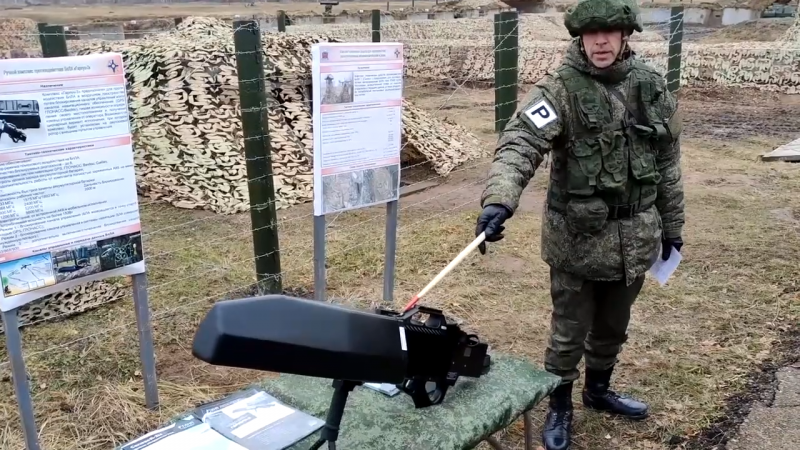
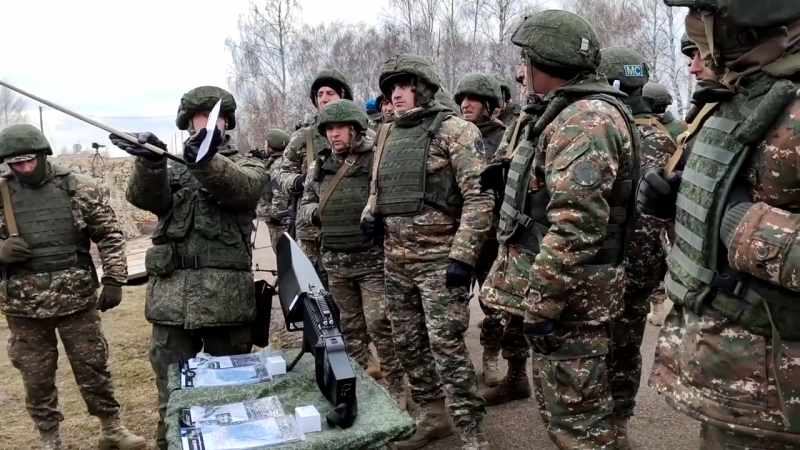
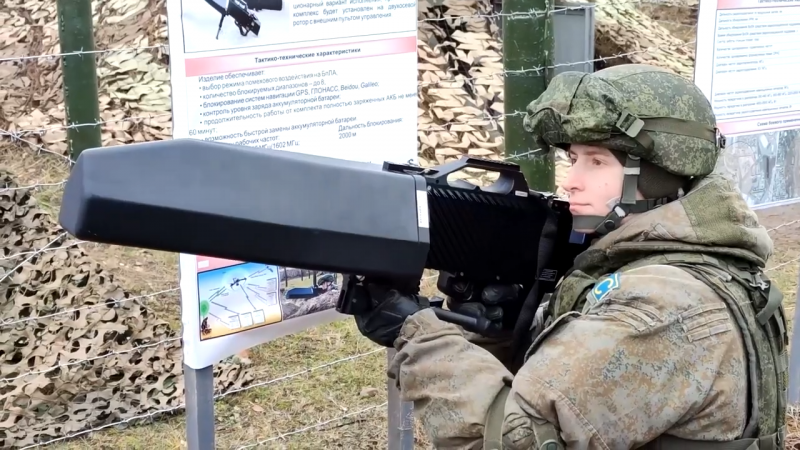
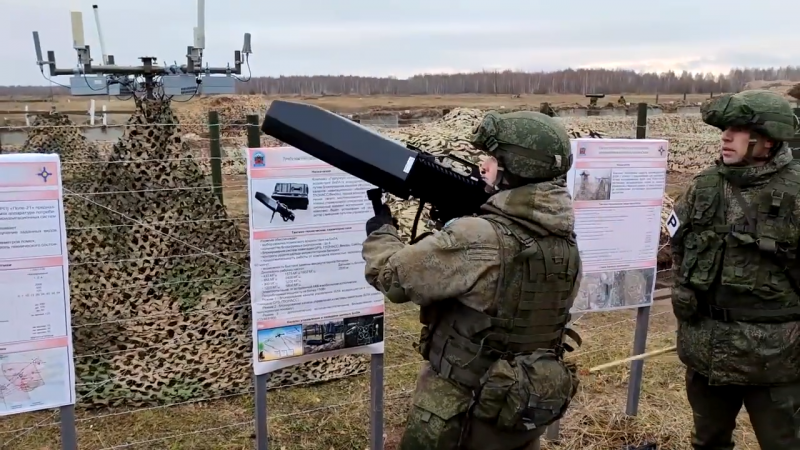
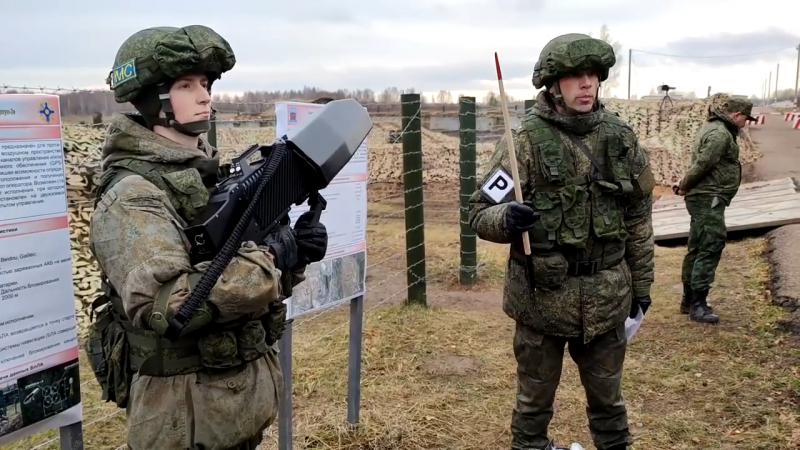
Information